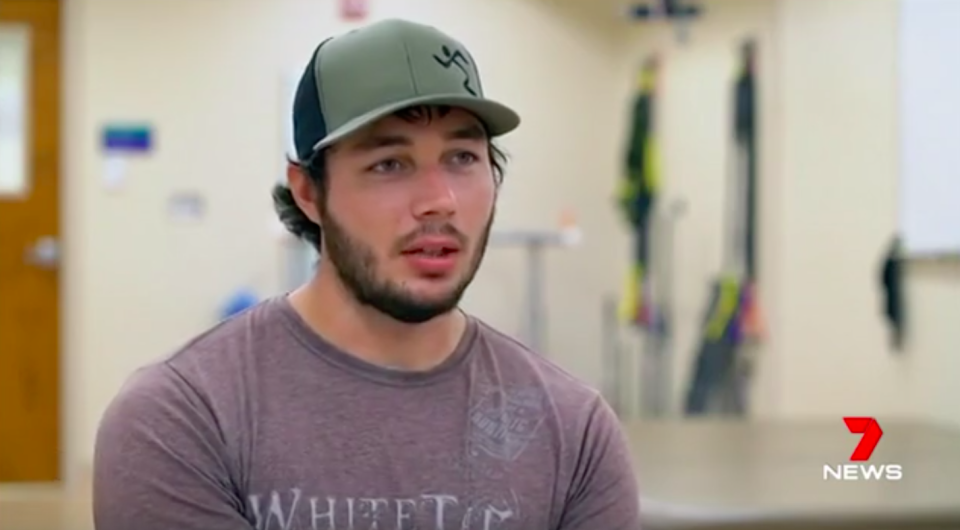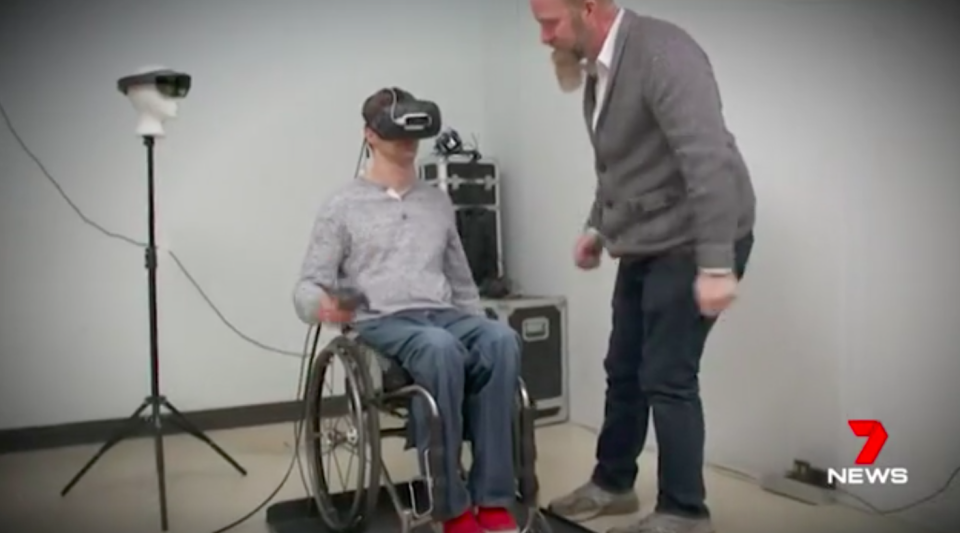Amazing moment paralysed man walks for first time in five years
A paralysed man wheelchair-bound for the last five years has stood up and walked thanks to a remarkable medical science advancement which looks set to be continued in Australia.
Electrodes implanted into Jered Chinnock’s spine, alongside hard work and courage, has enabled the 29-year-old to stand on his own two feet once again.
“To be able to move my legs and to walk, even to stand, it means a lot,” he revealed.

Mr Chinnock, from Tomah, Wisconsin, was injured in a tragic snowmobile accident, leaving him paralysed from his torso down and unable to walk.
But now he’s moving with help, thanks to intense physical therapy combined with an electrode implanted into his spinal cord and a battery in his abdomen which stimulates the nerves supplying the leg muscles, reactivating lost signals.
“We asked the question ‘well, can he stand and walk across the room with a walker assist?” Mayo Clinic’s Dr Kendall Lee said.
“And what’s really exciting to report right now is we got that done.”

A new therapy, developed in collaboration between Mayo Clinic and UCLA, uses an implanted electrode to reactivate spinal cord circuits. The experts claim this is the first documented case of something like this happening.
Patients at other institutions have also seen benefits from this therapy, and although more work needs to be done, it seems promising.
“Walking on the treadmill has gotten a lot better and easier,” he said of his ongoing recovery.
In a separate trial, electrical stimulation and physiotherapy has helped two others take steps.
Australian research to continue progress
While Mr Chinnock can walk with assistance he can’t feel, now a solution to that side of the paralysis problem is being developed much closer to home.

“He can’t feel his legs but still there is touch and movement information going through to the brain,” Dr Sylvia Gustin of Neuroscience Research Australia in Randwick said.
Australian research is currently using virtual reality to enhance that information, to re-awaken a sense of touch as well as movement, stepping ever closer to a medical miracle.
“I think our real challenge starts and that’s understanding how this happened, why it happened and who the best patients are that we can help going forward,” Mayo Clinic’s Dr Kristin Zhao said.


